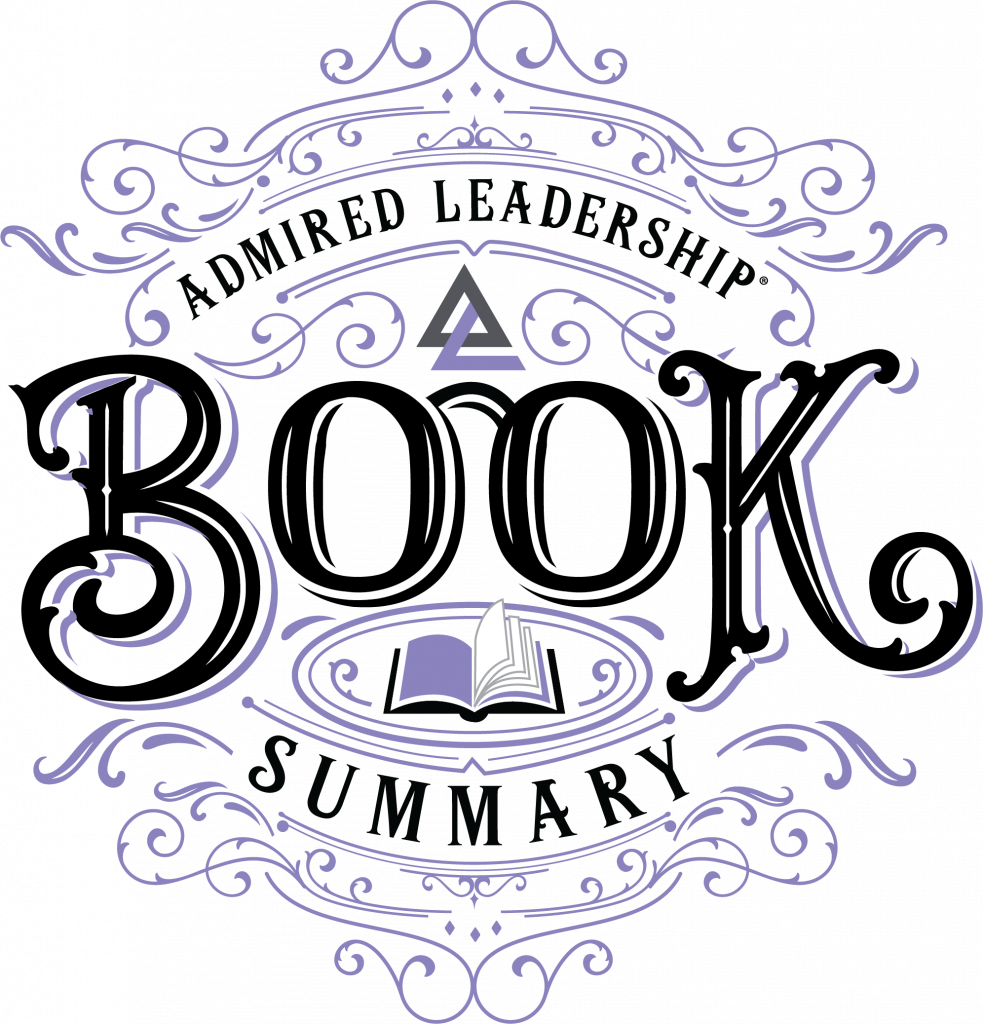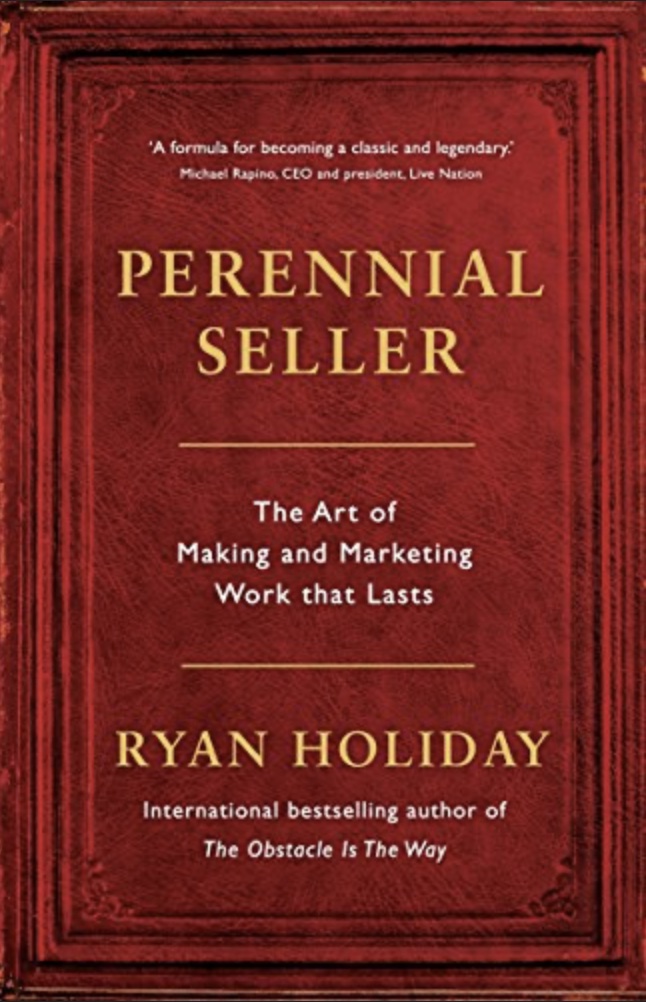Key Quote:
“Position and package your work to succeed. You must figure out how to capture your work and best communicate it to the world. Ultimately, you are the CEO of your own work, as you are the only one truly prepared to stand up for its integrity” (p. 69). — Ryan Holiday
Key Points and Concepts
The Creative Process: From the Mindset to the Making to the Magic
Holiday says creating work that lasts starts with creating work that is good. No amount of marketing will make a product succeed if it has not been made well. The creation of great work is centered in the creative process and the motivations of the creator. A deep desire to create perennial work is essential, as the creative process is a long haul. “Powerful work is a struggle and it requires great sacrifice. The desire for lasting greatness makes the struggle survivable,the sacrifice worth it” (p. 20).
Put in the time and effort to make great work. Ideas are a dime a dozen, but great work is rare. You must be driven by a deep desire to create great work so strong that you need to do it and can’t not do it. This desire is what will see you through the inevitable and necessary effort
required (pp. 22-23).
Trends and current phenomena should be avoided as they bring with them too much competition and their hype can obscure whether there is long-term potential. Timeless themes and principles woven with a contemporary touch can create a perennial seller. George Lucas used cutting-edge special effects in the creation of Star Wars, but “the story of Luke Skywalker is rooted in the same epic principles of Gilgamesh, of Homer, even of the story of Jesus Christ… epic themes of humanity that are left when the newness of the special effects falls away.” Because of this underlying timelessness, Star Wars is beloved by generations born long after the film’s release (pp. 32-34).
The creative process is non-linear, and the final product may end up being drastically different from the initial idea. Some artists have trouble looking back on their own work, which may seem foreign to their artistic consciousness because “it was not created by them, it was created by the process” (p. 39).
Ideas and creations should be subjected to numerous tests and retests. It is best to catch mediocre ideas early and in front of an audience. “A book should be an article before it’s a book, and a dinner conversation before it’s an article” (p. 42). By asking for input “you substantially reduce the fantastically inhuman pressure to be great simply by epiphany or a visit from the muses” (p. 44).
Know what you are doing and what you are not doing, by figuring out who and what the work is for. The mindset of “find your niche and scratch it” enables you to focus your energy on “making the right thing for the right people” (p. 45).
Rather than trying to produce something that is ‘better’ than something else, provide something new and timeless. “The Grateful Dead weren’t trying to be the best at anything… they were trying to be the only ones doing what they were doing” (pp. 52-53).
Positioning: From Polishing to Perfecting to Packaging
Position and package your work to succeed. You must figure out how to capture your work and best communicate it to the world. Ultimately,
you are the CEO of your own work, as you are the only one truly prepared to stand up for its integrity (p. 69).
Every creator needs an editor, no matter the nature of their work, because “when people are close to their own projects or their own talents, they can lose the ability to see objectively” (p. 70).
Test and retest your creation to see if you have created what you’re truly seeking to create. Holiday suggests an exercise to clarify not only what you are making, but who you are making it for and why. “Attempt to write out exactly what your project is supposed to be and to do in: One sentence. One paragraph. One page” (p. 78).
Finding the right core audience will lead you to your potential audience. With a well-defined audience in mind it is easier to envision just what that audience is going to need. By wowing a small, well-defined group, “there will be many opportunities to spread outward and upward” (pp. 86-87). Position and package your work to resonate with the right audience. The potential audience must somehow come to understand what the product is and why they should care (p. 91).
You must have total clarity in the reason and goals behind your project. “The answer should be clear… I am making__ that does __ for __ because __.” (p. 98). This clarity allows you the confidence to cut through difficult choices and “… know when to follow conventional wisdom and when to say, ‘screw it’” (p. 102).
Marketing: From Courting to Coverage, Pushing to Promotion
Marketing affects not only how your work finds an audience but how it will continue to do so through time (p. 110). Remember that nobody cares about what you have made as much as you have. Start from a place of reality, not projections, and place humility over ego. You must make people care about your work, “and that’s not going to be possible if [you] start with any illusions or entitlements” (p. 114).
Word of mouth is the most powerful and essential marketing tool. It is organic and can sustain like no other tactic can. In the skin care and phone industries, word of mouth is twice as effective as paid advertising (p. 119).
Not all perennial sellers are magnificent successes in their launch, but success in the short term is also desirable (pp. 120-121). Take an inventory of everything at your disposal in order to get your product out there at its launch, whether it be contacts, favors owed, resources, or relationships (p. 125).
Give away your product for free to get it out to an initial audience to get them hooked (p. 133). If you can’t give it away, then make it as cheap as possible without damaging its perception. The cheaper a book on Amazon, the more it sells and the more money it makes due to price elasticity (p. 137).
An endorser or champion of your product helps give it both attention and social proof that no advertising campaign can match (p. 147).
Media coverage is overrated. While it is good for credibility and status, it is not as important as measures like cost cutting and personalized outreach. If you do go for press, start with a small core audience such as a blog and spread upward. Grab media attention by “news jacking,” which is inserting your product into the conversation about a current trend. If an author launches his book and he announces that he will be accepting Bitcoin payments for it, he inserts himself into the current conversation about Bitcoin and attracts attention (p. 160).
Platform: From Fans to Friends and a Full-Fledged Career
A platform is a culmination of all the tools, resources, contacts, and relationships you cultivate through and for your work. The ability to draw on these assets can make you successful in the long term. The band Iron Maiden has enjoyed success for decades because of their strong platform. Instead of traditional PR they focus on “building a cross-generational global army of loyal fans who buy every single thing they put out” (p. 177).
The most important relationship is the one you have with your fans; maintain that relationship through the creation of more work. Continuously building a body of work allows you to reach new fans through current launches as well as to “continue to serve and bring joy to [your] existing audiences” (p. 207).
Create an empire. A platform lets us experiment, so we can create diversity and longevity in our work. Few people only do one thing. Holiday points out that “most of the real money isn’t in the royalties or the sales,” most authors consult or teach and musicians sell t-shirts or start fashion lines (p. 211).
Luck can be a factor, but as the old saying goes, “the more you do, the harder you work, the luckier you seem to get” (p. 220).
Holiday, R. (2017). Perennial Seller: The Art of Making and Marketing Work That Lasts. New York: Portfolio / Penguin.

“Position and package your work to succeed. You must figure out how to capture your work and best communicate it to the world. Ultimately, you are the CEO of your own work, as you are the only one truly prepared to stand up for its integrity” (p. 69).
“Test and retest your creation to see if you have created what you’re truly seeking to create. Holiday suggests an exercise to clarify not only what you are making, but who you are making it for and why. “Attempt to write out exactly what your project is supposed to be and to do in: One sentence. One paragraph. One page.”
“Word of mouth is the most powerful and essential marketing tool. It is organic and can sustain like no other tactic can. In the skin care and phone industries, word of mouth is twice as effective as paid advertising.”
“Create an empire. A platform lets us experiment, so we can create diversity and longevity in our work. Few people only do one thing. Holiday points out that “most of the real money isn’t in the royalties or the sales,” most authors consult or teach and musicians sell t-shirts or start fashion lines.”
